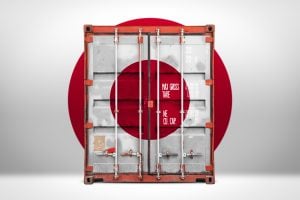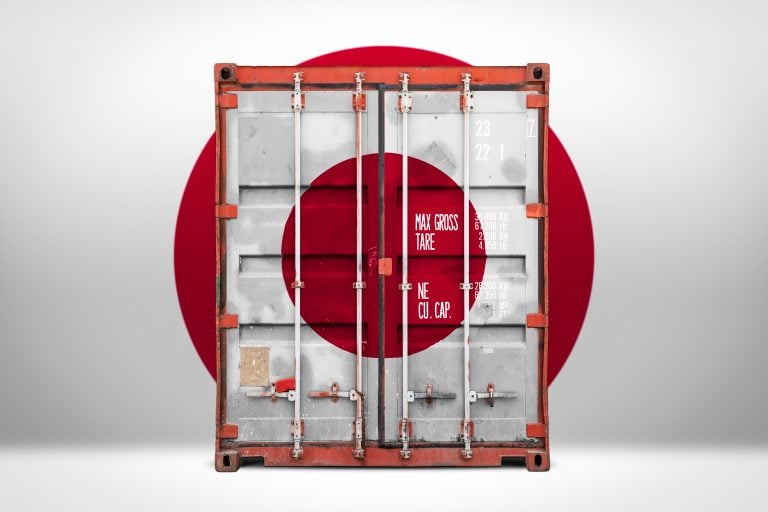Uranium prices have surged, making it one of the few commodities drawing excitement from investors
It’s expected to bring a number of new projects – good and bad – to the ASX
ASX hopefuls played down concerns about supply rising from major players to meet rising demand from utilities
After a 90% rise in 2023, uranium prices have surged beyond US$100/t in an apparent fulfilment of a destiny long predicted by nuclear sector believers.
And that is likely to bring lots of opportunities out of the woodwork.
“Certainly we’re seeing uranium come to the fore now, after many years of being in the doldrums and nobody really have much interest in it,” BDO global head of natural resources Sherif Andrawes told Stockhead on the sidelines of the RIU Explorers Conference in Fremantle.
“But the spike in uranium prices has meant there’s a lot more uranium projects that have been latent and lying around that are now coming and being promoted. I think the uranium companies themselves think that this is just a stepping stone to a much higher price.
“What’s now US$100/lb might be US$150/lb, or even US$200/lb according to some some uranium companies. So I think we’re going to see more rather than less in the uranium space in the coming year or two.”
But more opportunities means more moose pasture as well. And it is important to note many projects will fail for technical reasons just as much as they will for market concerns.
Think grade, depth or just plain lack of mineralisation.
The tailwinds for uranium have come from the vacuuming of supply in the lightly traded spot market by hedge funds and listed stockpilers like Sprott and Yellowcake PLC, supply discipline from major producers and the start of a new contracting cycle, as well as a Chinese-led reactor build that will see more new nuclear capacity constructed in the coming years than we’ve seen in decades.
Companies that predicted the uranium boom before it came are arguably better placed to profit on the sudden flow of investor dollars out of now struggling lithium and rare earths into uranium.
In the Athabasca
One of those earlier movers was Basin Energy (ASX:BSN), which is earning into ground in the Athabasca Basin, home to the world’s highest grade uranium mines famously known as the host of Cameco’s McArthur River and Cigar Lake mines – where grades sit around 100x the global average — and NexGen Energy’s (ASX:NXG) Arrow development asset, regarded by some analysts as a ‘geological freak’.
Basin has just kicked off a second phase drill program at the Geikie project, having listed when uranium spot prices were around half of current levels in September 2022.
“We were happy that we moved when we did and I think we’d waited another 12 months, we would never have been able to do a deal to get into that footprint of land that we’ve got,” Basin MD Pete Moorhouse said.
“There’s a difference between having land in the Athabasca and having quality land and I believe that the targets and the explorability of the landholding that we have is fantastic.
“Certainly the value of other opportunities has increased quite significantly listening to some of the deals which are being discussed.”
While a number of companies will be pegging new ground or dusting off old projects, Moorhouse is bullish on the potential benefits to flow from increased investment in uranium exploration.
“We saw this cycle coming and that’s what you get when you’ve got a team which has some solid uranium experience and we set Basin up specifically to make the most of this period and this exciting era which we’re coming into now,” he said.
“I’m certain we’ll see some projects emerge over the coming weeks and months which people are familiar with who were in the last boom, and we’ll see some new ones come out.
“So that’s fantastic to see the focus on the sector, and genuine capital coming in to quality exploration, which really is what we need to sustain the next 15 years of uranium demand.”
Hopeful in WA
Uranium was, along with gold and copper, one of just three major commodity classes to run higher in 2023 and it’s the only of those three to hold its gains in 2024 so far.
It’s come as uranium’s backers have successfully reframed the often controversial commodity as a key component of the energy transition, with the price of the energy fuel running higher at the same time lithium and nickel have nose-dived.
There are renewed hopes from Western Australian explorers that dynamic will soften attitudes to uranium mining in the State.
Four deposits were approved by State and Federal Environmental authorities in a brief honeymoon period for U3O8 during the reign of the conservative Colin Barnett Coalition Government from 2008 to 2017.
Of the four — Cameco’s Yeelirrie and Kintyre, Deep Yellow’s (ASX:DYL) Mulga Rock, and Toro Energy’s (ASX:TOE) Wiluna project — only Deep Yellow’s Mulga Rock hit the five-year substantial commencement timeframe set out in their State approval after the anti-uranium Labor Government’s ascent to power.
But Toro executive chairman Richard Homsany believes the volatility of lithium and nickel and positioning of uranium as a clean energy source will eventually see the WA Government soften its stance.
“Because of the vast improvement in the uranium market, and it’s showing no signs of slowing down at all — in fact all signs point to a sustained and growing supply deficit — we think the pressure will come on government and their policy towards uranium,” he said.
“And given the downturn in the nickel and lithium industry and WA, combined with the strength in the uranium markets, I think the government will have to turn their mind to reevaluating their policy on uranium development.”
Toro has four uranium deposits in Wiluna, including Lake Maitland, Lake Way, Millipede and Centipede, with Japanese utilities and trading house Itochu holding the right to acquire 35% of the former for US$39m.
At a US$70/lb U3O8 price, the mine could produce 22.8Mlb of uranium oxide and 11.9Mlb of vanadium pentoxide over a 17.5-year mine life, generating around $101m of EBITDA annually on after scoping level assessed capex of $270m.
Homsany said uranium would already be at an incentive price needed to justify an investment decision if government policy weren’t a roadblock for Toro.
“We are in that market right now and we see that as being a sustained medium term to long term proposition so there are mines in WA which could be developed and make a strong financial return for not only shareholders but the West Australian economy and stakeholders,” he said.
What is the risk?
But it is not all sunshine and roses. There were jitters last week that saw a heavy sell-off in ASX uranium stocks after Cameco announced plans to ramp up output this year and utilise its full approved capacity at McArthur River and Key Lake of 25Mlbpa ‘when the time is right’.
That stoked market fears the market could be supplied from legacy miners, even as demand rises and Cameco’s biggest competitor Kazatomprom reveals it will fall short of production targets this year and next due largely to sulphuric acid shortages.
Miners are more sceptical Cameco’s ramp-up plans will make a dent in what is a bullish demand outlook and uncertain supply picture.
“If you look at it over a three- to four-year period, the real new demand for uranium hasn’t even yet kicked in from the utilities,” Homsany said.
“If a major oil producing company were to announce what Kazakhstan announced you would have expected this oil price to make a sharp response upwards but (uranium) didn’t do anything.
“The price maybe only moved $1 or $2 and even though Cameco have stated an enhanced production ambition, there is enough excess demand in the market over supply to soak up what they’re proposing to increase their production by.
“Uranium is in for a long, long term bull run.”
His confidence is echoed by Elevate Uranium (ASX:EL8) MD Murray Hill, whose company owns the 48Mlb at 200ppm Koppies resource in Namibia and the smaller 61Mlb at 93ppm Marenica.
“Kazatomprom … have come out and said we’re going to be sort of 9 million pound a year less. Langer-Heinrich (Paladin (ASX:PDN)) and Boss (ASX:BOE) are coming on stream.
“Those two combined won’t even get to 9Mlb.
“Don’t forget Cameco have come from zero production three years ago. So any per cent increase is relative to nothing.
“And last year, twice, they revised their forecast down and then still didn’t meet it. And then this year, they’re coming down and saying we’re going to meet our production target. Well, I doubt it.”
Elevate is shifting over the coming months from inferred to indicated resource drilling at Koppies and metallurgical test work to establish an ideal processing pathway and back development studies.
With a dearth of development ready projects in the pipeline, Hill says M&A could re-emerge in the space as well in multiple forms.
“I think as the uranium price goes up, the supply-demand equation gets worse because we’re not going to meet demand. So I think there will certainly be some M&A activity I think because utilities have got to stir up supply somehow,” he said.
“Will they be buyers of uranium projects? I don’t know. The Chinese are, they buy uranium projects to feed their reactors. The French have been operating uranium projects to feed their reactors, will the US join that?
“Or will it just be bigger companies buying something who knows? I wish we could predict that.”
Uranium share prices today:
At Stockhead we tell it like it is. While Basin Energy and Elevate Uranium were Stockhead advertisers at the time of writing, they did not sponsor this article.
The post RIU Explorers: ASX uranium opportunities could be ready to explode. Choose wisely appeared first on Stockhead.




















